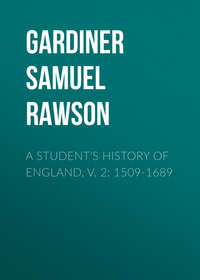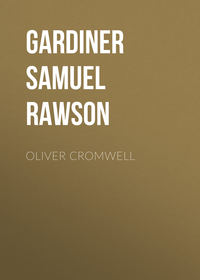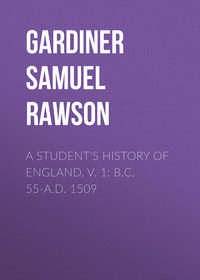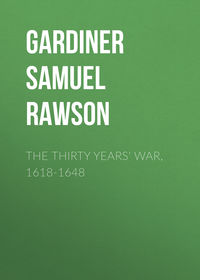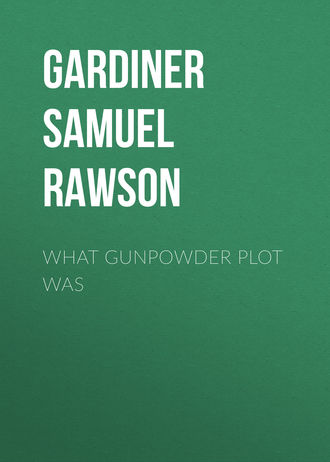 полная версия
полная версияWhat Gunpowder Plot Was
35
Properly ‘John.’
36
S. P. Dom. xvi. 20.
37
G. P. B. No. 37. Witnessed by Northampton and Popham only.
38
The letter to Cornwallis, printed in Winwood’s Memorials, ii. 170, is dated Nov. 9, as it is in Cott. MSS. Vesp. cix. fol. 240, from which it is printed. That volume, however, is merely a letter book. The letter to Edmondes, on the other hand, in the Stowe MSS. 168, fol. 213, is the original, with Salisbury’s autograph signature, and its date has clearly been altered from 7 to 9.
39
Waad to Salisbury, Nov. 7. – Hatfield MSS.
40
Waad to Salisbury, Nov. 8. —G. P. B. No. 48 B.
41
In ‘The King’s Book’ it is stated that Fawkes was shown the rack, but never racked. Probably the torture used on the 9th was that of the manacles, or hanging up by the wrists or thumbs.
42
The principal ones were either killed or taken at Holbeche on that very day.
43
Thomas Winter.
44
Catesby, Percy, and John Wright.
45
I.e. Catesby. In a copy forwarded to Edmondes by Salisbury (Stowe MSS. 168, fol. 223) the copyist had originally written ‘three or four more,’ which is altered to ‘three.’
46
‘Then,’ omitted in the Stowe copy.
47
Christopher Wright.
48
‘Unto,’ in the Stowe copy.
49
Robert Winter. The question whether Keyes worked at this time will be discussed later on.
50
‘Any man,’ in the Stowe copy.
51
‘Others,’ in the Stowe copy.
52
‘One’ is inserted above the line.
53
This is an obvious mistake, as the widow Skinner was not at this time married to Bright, but one just as likely to be made by Fawkes himself as by his examiners.
54
‘Viewed it,’ in the Stowe copy.
55
‘Taken,’ in Stowe copy.
56
‘Thence,’ in Stowe copy.
57
Percy.
58
The words in italics are marked by penstrokes across them for omission.
59
‘With that practice, that,’ in the Stowe copy.
60
‘Then,’ omitted in the Stowe copy.
61
‘But,’ omitted in the Stowe copy.
62
‘Whereof,’ in the Stowe copy.
63
Gerard, p. 268.
64
Stowe MSS., 168, fol. 223.
65
Gerard, p. 170.
66
Gerard, p. 169.
67
S. P. Dom. xii. 24.
68
Gerard, p. 175. Coke’s questions are in S. P. Dom. xvi. 38.
69
The handwriting is quite different.
70
This declaration, therefore, was not, as Mrs. Everett Green says, ‘made to Salisbury.’
71
If anyone chooses to argue that this examination was drawn up regardless of its truth, and only signed by Fawkes after torture had made him incapable of distinguishing truth from falsehood, he may be answered that, in that case, those who prepared it would never have added to the allegation that some of the conspirators had received the Sacrament from Gerard the Jesuit to bind them to secrecy, the passage: – “But he saith that Gerard was not acquainted with their purpose.” This passage is marked for omission by Coke, and it assuredly would not have been found in the document unless it had really proceeded from Fawkes.
72
About whom more hereafter.
73
Gerard afterwards denied that this was true, and the late Father Morris (Life of Gerard, p. 437) argues, with a good deal of probability, that Fawkes mistook another priest for Gerard. For my purpose it is not a matter of any importance.
74
This should be John.
75
Probably, as Father Gerard suggests, what would now be known as a coursing match.
76
Proclamation Book, R.O. p. 117.
77
A late postscript added to the letter to the Ambassadors sent off on the 9th (Winwood, ii. 173) shows that before the end of the day Salisbury had learnt even more of the details than were comprised in the Sheriff’s letter.
78
Nov. 5.
79
Nov. 6.
80
Nov. 7.
81
Nov. 8.
82
The question whether Winter or Keyes was one of two workers will be subsequently discussed.
83
Mrs. Everett Green suggests Nov. 8 (G. P. B. No. 133), but this is merely a deduction from her mistaken date of the examination of the 17th (see p. 17, note 1). In Fawkes’s confession of the 9th Keyes’s Christian name appears to have been subsequently added.
84
Extracts from the Council Registers, Add. MSS. 11,402, fol. 108. The volume of the Council Book itself which recorded the transactions of these years has been lost.
85
G. P. B. No. 101. There is a facsimile in National MSS. Part iv. No. 8.
86
See pp. 18, 20.
87
Gerard, p. 174.
88
Gerard, p. 268.
89
The erasure of Winter’s name, and the substitution of that of Keyes, will be dealt with later.
90
Gerard, p. 168.
91
Father Gerard appears to show his dislike of Salisbury by denying him his title.
92
All Saints Day.
93
Compare this with Fawkes’s declaration at his second examination (G. P. B. 16, A.) “Being demanded when this good act had been done which must have brought this realm in peril to be subdued by some foreign prince, of what foreign prince he and his compliees could have wished to have been governed, one more than another, he doth protest upon his soul that neither he nor any other with whom he had conferred would have spared the last drop of their blood to have resisted any foreign prince whatsoever.” Are we seriously asked to believe that Salisbury placed this crown of sturdy patriotism on the brows of those whom he wished to paint as the most atrocious villains?
94
Juan de Velasco, Duke of Frias, Constable of Castile, arrived at Brussels about the middle of January 1604 to conduct a negotiation for peace with England. There he remained, delegating his powers to others. This date of the Constable’s arrival is important, as showing that Winter’s conversation with Catesby cannot have taken place earlier than the second half of January.
95
Hugh Owen was, as Father Gerard says (p. 173, note 1), ‘A soldier and not a priest, though in the Calendar of State Papers he is continually styled “Father Owen,” or “Owen the Jesuit.”’ He is however mistaken in saying that Mrs. Everett Green inserted the title without warrant in the original documents. A paper of intelligence received on April 29, 1604, begins, “Father Owen, Father Baldwin and Colonel Jaques, three men that rule the Archduke at their pleasure,” &c.
96
In 1604 Easter term began on April 25, and ended May 21.
97
This distinctly implies that Percy did not know the secret before, and I therefore wish to retract my former argument – which is certainly not conclusive – in favour of an earlier knowledge by Percy. Hist. of Engl. 1603-1642, i. 235, note 1.
98
“In his declaration, November 8th, however,” writes Father Gerard (p. 91, note 1), “he gives as a reason for going abroad, ‘lest, being a dangerous man, he should be known and suspected.’” I see no discrepancy between the two statements. Having been long abroad, Fawkes’s face would not be known to the ordinary Londoner as that of a Recusant, and he was therefore better qualified to act as a watchman than others who were so known. On the other hand, when there was no need for anybody to watch at all, somebody who had known him in Flanders might notify the Government of his appearance in England, and thereby raise suspicions against him. Besides, there were other reasons for his going over which Fawkes did not think fit to bring to the notice of the Government.
99
Began October 9, ended November 28.
100
Marginal note: “This was about a month before Michaelmas.”
101
The Duke of York, afterwards Charles I.
102
Some such words as ‘we resolved’ are probably omitted here.
103
In MS. ‘taken it before.’
104
Interlined in the King’s hand ‘which was about four thousand pounds.’
105
Altered in the King’s hand to ‘to the number of ten,’ with a marginal note ‘unclear phrase,’ in the same hand.
106
Prince Henry.
107
Perhaps the Prince was with his mother at Greenwich.
108
Oct. 27.
109
Oct. 31.
110
Nov. 1.
111
Nov. 2.
112
Nov. 3.
113
Nov. 4.
114
5 A.M. on Nov. 5.
115
Nov. 6.
116
Nov. 7.
117
Nov. 8.
118
The attestation in brackets is in Salisbury’s hand.
119
Gerard, p. 182.
120
I.e., Thomas Winter.
121
Mrs. Everett Green’s abstract of this, to the effect that Fawkes said that the conspiracy ‘was confined to five persons at first, then to two, and afterwards five more were added,’ has no foundation in the document she had before her.
122
G. P. B. No. 49.
123
G. P. B. No. 37.
124
G. P. B. No. 133.
125
The name ‘Key’ or ‘Keyes’ occurs in both of them without his Christian name.
126
Proclamation Book, R.O.
127
G. P. B. No. 129.
128
‘The Discourse of the Powder Treason,’ published in Bishop Montague’s Works of James I., p. 233, only forms part of the original so-called ‘King’s Book,’ which was published anonymously in 1605 (i. e., before March 25, 1606) under the title of His Majesty’s Speech in this last Session of Parliament … together with a Discourse of the Manner of the Discovery of this late Intended Treason, joined with the Examination of Some of the Prisoners. – Brit. Mus., Press Mark E. 1940, No. 10. In the Preface directed by the Printer to the Reader, the Printer states that he was about to commit the Speech to the press when there came into his hands ‘a discourse of this late intended most abominable treason,’ which he has added. The King’s speech was delivered on November 9, and, if it was to be published, it is not likely to have been long kept back. The discourse consists of four parts – 1. An account of the discovery of the plot, and arrest of Fawkes. 2. Fawkes’s declaration of the 17th. 3. Winter’s confession of the 23rd. 4. An account of the flight and capture of the conspirators. The whole composition shows signs of an early date. Part 1 knows nothing of any names except those of Percy and Johnson alias Fawkes, and was probably, therefore, drawn up before the confession of the 9th. At the end it slips off from a statement that Fawkes, having been ‘twice or thrice examined when the rack having been only offered and showed unto him, the mask of his Roman fortitude did visibly begin to wear and slide off his face, and then did he begin to confess part of the truth,’ into ‘and thereafter to open up the whole matter as doth appear by his depositions immediately following.’ Then comes the declaration of November 17, with Winter amongst the diggers and Keyes amongst those afterwards made privy. Between Parts 2 and 3 we have the following statement: “And in regard that before this discovery could be ready to go to the press, Thomas Winter, being apprehended and brought to the Tower, made a confession in substance agreeing with this former of Fawkes’s, only larger in some circumstances. I have thought good to insert the same likewise in this place, for the further clearing of the matter and greater benefit of the reader.” May we not gather from this that the ‘discourse’ was finally made up for the press on or very soon after the 23rd? Winter, it may be noted, does not mention the name either of his brother or of Keyes.
129
Gerard, App. E., p. 251.
130
This note is on too small a scale to be reproduced in the frontispiece.
131
This name is given at a later time to the ‘Passage leading to the Parliament Stairs’ of Capon’s plan, and I have, for convenience sake, referred to it throughout by that name.
132
See p. 22.
133
Gerard, p. 62.
134
Gerard, pp. 141, 142.
135
I suppose Thomas Barlow is meant. William Barlow, who was Bishop of Lincoln in the reign of James I., did not write about the plot.
136
Speed’s History, ed. 1611, p. 891.
137
March 24th, 1604.
138
Copy of the Agreement, G. P. B., No. 1.
139
Pat. 44 Eliz., Part 22.
140
Gerard, p. 60, note 1.
141
Smith’s Antiquities of Westminster, p. 39. The question of the number of doors in the cellar will be dealt with hereafter.
142
Gerard, p. 67.
143
Gerard, p. 65.
144
P. 56.
145
Pat. 4 Edw. VI., Part 9.
146
Pat. 6 Edw. VI., Part 5.
147
Pat. 30 Eliz., Part 10.
148
Parliament Place.
149
Assignment, July 17, 42 Eliz., Land Revenue Records Office, Inrolments v. fol. 104. I have been unable to trac Whynniard’s tenure of the house I have assigned to him. It was within the Old Palace, and was probably the official residence of its keeper. Whynniard was appointed Keeper of the Old Palace in 1602. Pat. 44 Eliz., Part 22.
150
See plan at p. 81. Was this the baker in whose house Catesby tried in vain to secure a room? – ‘Bates’s Confession, Dec. 4, 1605’; G. P. B. No. 145.
151
Whynniard was Keeper of the Wardrobe at Hampton Court, which would account for his servant being concerned in the Queen’s removal.
152
Otherwise Parliament Stairs.
153
I suspect that this was what was afterwards known as Cotton Garden. I have been unable to trace the date at which it was conveyed to Sir Robert Cotton.
154
G. P. B. No. 40.
155
See p. 63.
156
See p. 90.
157
This we know from Capon’s pencilled notes to the sketch in the frontispiece.
158
The late Chairman of the Works Department of the London County Council; than whom no man is better qualified to speak on such matters.
159
There are indeed old walls marked in Capon’s plan beneath the ground, but we do not know of what substance they were composed or how near the surface they came.
160
Speed, no doubt, rested this assertion on Winter’s evidence that ‘we underpropped it, as we went, with wood.’ (See p. 64.)
161
Gerard, pp. 66, 67.
162
See the remarks of the Edinburgh Reviewer on the ease with which Baron Trenck executed a far harder piece of work without being discovered for a considerable time.
163
Used as such, Father Gerard notes, till the Union with Ireland in 1800.
164
This was true of the general line of the bank, but, as will be seen at pp. 81, 83, there was a kind of dock which brought the water within about thirty yards of the house.
165
Gerard, pp. 59, 60.
166
G. P. B. No. 129.
167
This is clearly a slip. The cellar was not under the house hired by Percy.
168
For its possible situation see p. 91; or it may have been erected in the courtyard shown in the plans at pp. 82, 83.
169
See pp. 34, 65. The difficulty of measuring the thickness of the wall was not so great as Father Gerard fancies. In 1678 Sir Christopher Wren reported that ‘the walls are seven feet thick below’ (Hist. MSS. Com. Report XI. App. ii. p. 17). As he did not dig below the surface this must mean that they were seven feet thick at the level of the floor of the so-called cellar, and this measurement must have been known to the conspirators after they had access to it. I am informed that in the case of a heavy wall, especially when it is built on light soil, as was the case here, the foundations are always constructed to be broader than the wall itself. The diggers, observing the angle of the face they attacked, might roughly calculate that a foot on each side might be added, thus reaching the nine feet.
170
Father Gerard (p. 64, note 2) writes: “There is, as usual, hopeless confusion between the two witnesses upon whom, as will be seen, we wholly depend for this portion of the story. Fawkes (November 17, 1605) makes the mining operations terminate at Candlemas, and Winter (November 23) says that they went on to ‘near Easter’ (March 31). The date of the hiring the ‘cellar’ was about Lady Day (March 25).” I can see no contradiction. The resumption of work for a third time in March was, from Winter’s mode of referring to it, evidently for a very short time. “And,” he says, “near to Easter, as we wrought the third time, opportunity was given to hire the cellar.” Fawkes, though less clear and full, implicitly says much the same thing. He says that ‘about Candlemas we had wrought the wall half through,’ and then goes on to describe how he stood sentinel, &c. Then at the beginning of another paragraph we have “As they were working upon the wall they heard a rushing in a cellar, &c.” Fawkes gives no dates, but he says nothing to contradict the third working spoken of by Winter.
171
Gerard, pp. 65, 66.
172
Goodman, i. 104.
173
G. P. B. No. 40. Father Gerard (p. 142) says that we learn on the unimpeachable testimony of Mrs. Whynniard, the landlady, that Fawkes not only paid the last instalment of rent on Sunday, November 3, but on the following day, the day immediately preceding the intended explosion, had carpenters and other work folk in the house for mending and repairing thereof (G. P. B. No. 39). “To say nothing of the wonderful honesty of paying rent under the circumstances, what was the sense of putting a house in repair upon Monday, which on Tuesday was to be blown to atoms?” The rent having fallen due at Michaelmas, is it not probable that it was paid in November to avoid legal proceedings, which might at least have drawn attention to the occupier of the house. As to the rest, the ‘unimpeachable testimony’ is that – not of Mrs. Whynniard, but of Roger James (G. P. B. No. 40), who says that the carpenter came in about Midsummer, not on November 4.
174
Gerard, p. 69.
175
G. P. B. No. 101.
176
See p. 108.
177
G. P. B. No. 39.
178
Gerard, p. 87.
179
Here is another ‘discrepancy,’ which Father Gerard has not noticed. As the ‘cellar’ was not taken till a little before Easter, Percy could not make a door into it about the middle of Lent. My solution is, that in his second examination, on November 6th, Fawkes was trying to conceal the existence of the mine, in order that he might not betray the miners, and therefore antedated the making of the door. See p. 25.
180
Gerard, p. 88.
181
Gerard, p. 89.
182
Gerard, p. 74.
183
See p. 66.
184
See the table in State Papers relating to the Defeat of the Spanish Armada, ed. by Prof. Laughton for the Navy Records Society, i. 339.
185
Edinburgh Review, January 1897, p. 200.
186
Gerard, p. 148.
187
We know that Percy visited the house at Westminster at Midsummer. See p. 104.
188
Grange to Salisbury, Nov. 5. —G. P. B. No. 15.
189
Justices of Warwickshire to Salisbury, Nov. 12. —Ib. No. 75.
190
Goodman, i. 102.
191
Gerard, p. 151.
192
Goodman, i. 105.
193
Gerard, p. 152.
194
Warrant, Feb. 8; Commission, Feb. 21; Pass, Oct. 25, 1605. —S. P. Dom., xii. 65; Docquet Book, 1605; S. P. Dom., xv. 106.
195
To the theory that Salisbury wanted inconvenient witnesses disposed of, because the man who shot Percy and Catesby got a pension of two shillings a day, I reply that the Government was more afraid of a rebellion than of testimony. At all events, 2s. at that time was certainly not worth 1l. now, as Father Gerard assumes here, and in other passages of his book. It is usual to estimate the value of money as being about four or five times as much as it is in the present day. The relative price, however, depended so much on the commodities purchased that I hesitate to express myself positively on the subject. The only thing that I am quite clear about is that Father Gerard’s estimate is greatly exaggerated. It is true that he grounds his errors on a statement by Dr. Jessopp that 4,000 marks was equivalent to 30,000l., but the very exaggeration of these figures should have led him to suspect some error, or, at least – as I have recently been informed by Dr. Jessopp was the fact – that his calculation was based on other grounds than the relative price of commodities.


